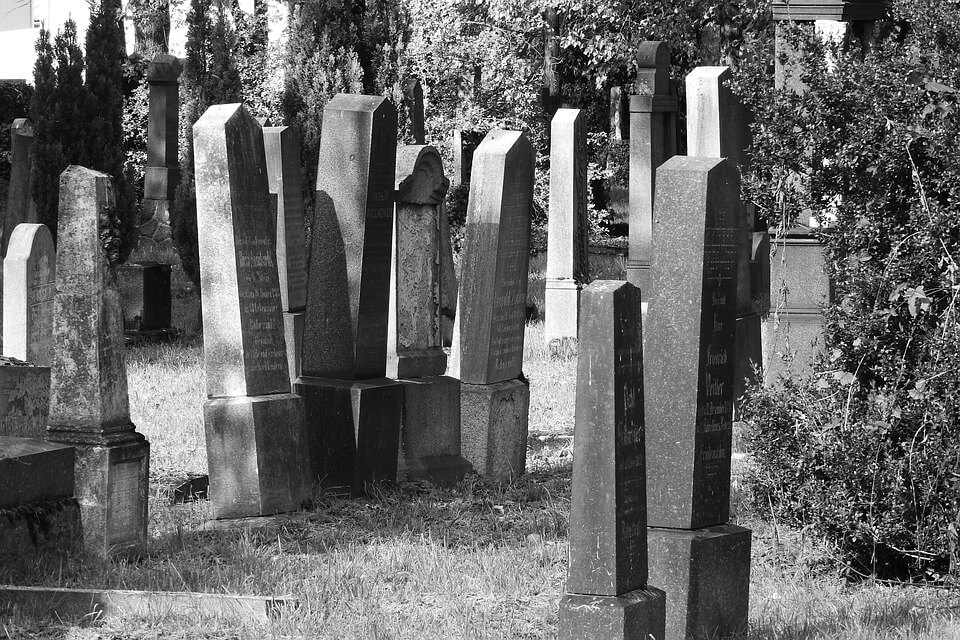Graveyard tours are often promoted in the month of October as an opportunity for spookiness. Judaism, however, encourages visiting the burial sites of relatives and holy people at all times of the year. Such visits are seen as opportunities for prayer, reflection and inspiration. Certain sites, such as the Tomb of Mother Rachel (whose yahrtzeit is observed today) and the Tomb of the Patriarchs, are considered particularly auspicious for supplication.
The Jewish view of the afterlife is of an existence that is complex. In life, a person has the opportunity to perform mitzvot and grow spiritually (or the opposite). This opportunity ends at death, but the soul lives on in its appointed place in Heaven. There it remains attuned to life on earth while in the embrace of the Divine presence (for more on the afterlife, click here). Praying at a grave connects the petitioner to the departed, calling for their spiritual advocacy on behalf of those who live.
The Talmud records that when the 12 spies went into the Land of Israel (click here), Caleb, who was one of the scouts, visited the Tomb of the Patriarchs in Hebron and prayed, “My fathers, pray on my behalf that I may be delivered from the plan [to discourage entering the Land of Israel] of the [other] spies” (Talmud Sotah 34b).
Rachel’s Tomb is a particularly popular location for prayers. The Midrash Rabbah mentions that when the Babylonians drove the Jewish people out of the Land of Israel, they passed by the very same road where Rachel lay buried. Upon seeing her weeping descendants, the soul of Rachel presented herself before the Heavenly Court and successfully advocated for Divine mercy that her children be allowed to return to the Holy Land. (Click here to read more.)
While others may go to graveyards to see what goes “bump in the night,” a Jewish visit to a graveyard is an opportunity to demonstrate respect for those who have passed, to find inspiration in the deeds of the departed and to have a few words with the Giver of all life.

Copyright © 2017 NJOP. All rights reserved.
Bibliography
Related Posts
A Jewish Treats Guide to Visiting the Zoo
Throughout the world, April 8th is celebrated as “Zoo Lovers Day.” The first zoo of…
0 Comments3 Minutes
 Print This Page
Print This Page